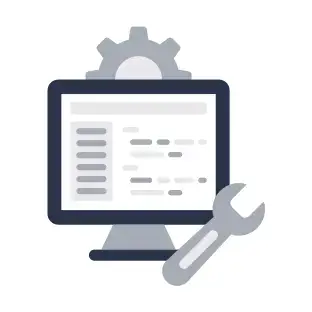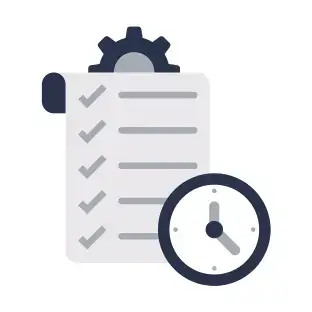Cloud Migration Can Unlock Your Company’s Potential

Data is taking flight – and heading straight for the cloud. With the rise of remote working and hybrid working models, it’s no surprise that cloud migration is growing. Its growth cannot be solely associated with the ‘work from home’ revolution.
Cloud migrating is crucial to the rise of big data: Artificial Intelligence (AI), advanced Business Intelligence (BI), Machine Learning (ML), and the Internet of Things (IoT). The global cloud computing market is predicted to have a $1 trillion valuation by 2028. 89% of organizations are looking towards multi-cloud solutions as the industry evolves.
Avenvis will help your organization unlock the potential of cloud technology with outsourced tech support services to ensure a smooth migration to the cloud. We’re exploring the world of cloud migration, spotlighting the benefits of migrating to the cloud and the common challenges businesses face.
What is Cloud Migration?
Cloud migration is the movement of on-site digital servers (also known as “on-premises” servers), resources, and operations to the server of a public cloud provider. This migrating can also occur between different cloud providers.
Moving applications, data, and workloads to cloud-based infrastructure is crucial for gathering big data analytics, improving efficiency, and supporting hybrid working.

Benefits of Cloud Data Migration:
- Cloud migrating provides increased flexibility for organizations, allowing seamless scalability and the option to configure and reconfigure digital systems. Organizations can monitor and manage cloud resources and data centers with central management tools on just one screen.
- Organizations benefit from the flexibility and scalability of cloud servers, paying only for the resources they use. It’s more cost-effective than maintaining in-house IT systems due to optimized workloads. 82% of companies have reported reduced operating costs after utilizing cloud technology.
- Cloud migration does not require hardware that can quickly become outdated and underperform with continued usage. Cloud server infrastructure meets compliance standards for specialist industries like finance and healthcare.
- Investing in cloud migration makes digital servers and infrastructure more reliable. Therefore, it should be considered part of the company’s risk management strategy.
- Cloud migrating ensures data protection with multi-layered systems with automatic security patching to protect your resources. 60% of C-suite executives told Oracle that security is the top benefit of cloud migrating.
- Cloud servers ensure business continuity with backup and recovery capabilities built in. Most cloud providers will store backups across various geographic regions to minimize downtime risks.
Strategies for Migrating to the Cloud
Your organization’s budget and objectives will determine your cloud migrating strategy. There are six common cloud migrating strategies: refactoring, rehosting, replatforming, retiring, retaining, and repurchasing.
- Refactoring
Rebuilding software and rewriting part of its code to suit the cloud platform you’re migrating to. While it’s a time-consuming process that requires accuracy, it can also boost efficiency post-migration.
- Rehosting
The most straightforward due to its simplicity as it moves on-premises data and resources to public cloud servers.
- Replatforming
Making minor changes to the system’s architecture while transferring data without requiring the entire system to be rebuilt, as only minor alterations are made.
- Retiring
Auditing existing systems and dependencies to eliminate outdated resources at the start of the cloud migration process to maximize efficiency and focus the migrating process on crucial resources and operations.
- Retaining
Keeping an identified number of apps, resources, and systems on-premises while migrating the rest to the cloud.
- Repurchasing
Choosing out-of-the-box cloud solutions instead of a custom-built system, also known as “drop-and-shop”.
Common Challenges with Cloud Migration
Outsourcing your cloud migration strategy can streamline processes and mitigate common challenges organizations of every size face. While moving individual workloads may seem simple, it can be complex and require extensive planning for large-scale data migration.
Although cloud migrating provides short and long-term returns on your investment, your company must consider the upfront cost of cloud migrating, including planning and implementation. Upskilling staff to use cloud software is an additional cost many businesses overlook.
Cloud migration involves business downtime. It’s an unavoidable part of the process, however, careful planning can minimize downtime, even when migrating a large volume of data. Outsourcing your cloud migration can streamline the process and minimize these challenges.
Are you not sure where to start with your cloud migration? Contact the Avenvis team to discuss your cloud migrating options. We offer support for cloud development cycles and databases, including Oracle, SQL, and MongoDB.
Step-by-Step Cloud Data Migration
95% of data workloads are predicted to be hosted on cloud servers by 2050, compared to 30% in 2021. However, regardless of the type of cloud system you choose, there are five crucial to ensure a seamless transfer.
- Develop a cloud migration plan
Start by assessing your company’s current infrastructure and identify fundamental assets crucial to business operations that align with your objectives. Define and align your cloud migration strategy to your desired business outcomes.
- Choose your cloud environment
After developing your strategy overview and objectives, choose the cloud model that best aligns with these, either a public, private, or hybrid cloud migration option. You’ll have to prepare on-premises and cloud environments for the migration.
- Migrate apps, data, and systems
Transfer apps, data, and systems from your company server to your chosen cloud server, ensuring that all compliances are met and backups are secure.
- Governance and security
Ensure best practices by implementing security and cost governance to workloads and the cloud environment.
- Evaluate performance
After your cloud migrating process is complete, carry out regular evaluations to test the performance of your server. Report any bugs or issues that may occur.
Collaborate with Avenvis, Cloud Migrating Specialists
Your company needs to invest in cloud migration tools, training, and the right infrastructure to make your transition a success. Collaborating with a cloud migration specialist like Avenvis ensures your company can unlock the potential of cloud technology with secure and efficient cloud-based solutions.
We’ll analyze your current infrastructure and identify crucial parts of your workload to streamline data migration and minimize business disruption. Find out more about our end-to-end IT support services by scheduling a free IT consultation.



































